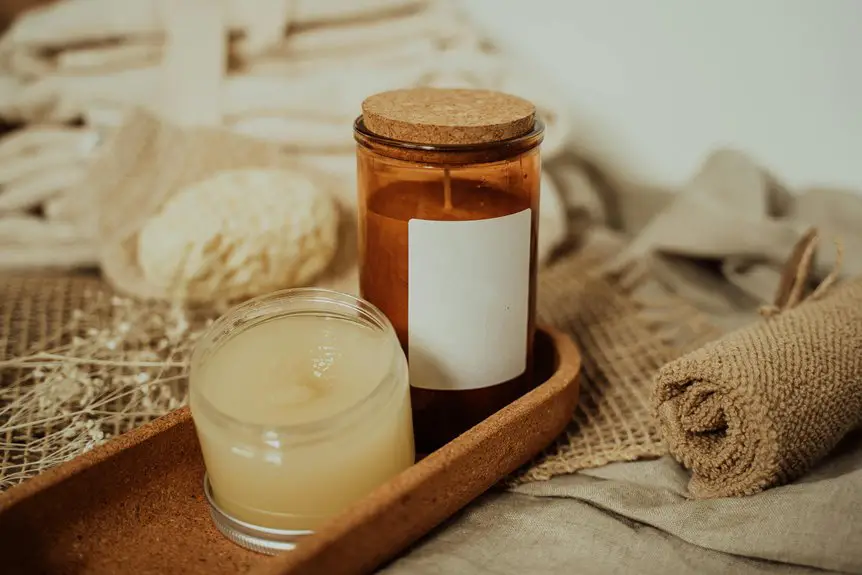When you pick out polyester gear, you might not realize how much the fabric’s texture affects moisture management. Brushed polyester feels soft and cozy, but does that fuzzy surface slow sweat from drying? On the flip side, smooth polyester looks sleek—does that help wick moisture away faster? Understanding these differences could change how you choose your activewear or casual layers for comfort and performance.
Table of Contents
Key Takeaways
- Brushed polyester has a soft, fuzzy texture that slightly slows moisture wicking compared to smooth polyester.
- Smooth polyester’s sleek texture enhances moisture travel and evaporation, improving wicking efficiency.
- Both fabrics wick moisture by pulling sweat away from skin, but smooth polyester dries faster.
- Brushed polyester provides adequate moisture management for casual wear but is less ideal for intense athletic use.
- Texture choice impacts comfort and moisture control, with smooth polyester favored for performance apparel.
Understanding Polyester Fabric Textures
Texture plays a key role in how polyester feels and performs, and understanding the differences can help you choose the right fabric for your needs.
When you’re exploring polyester options, you’ll notice distinct fabric characteristics between brushed and smooth varieties. Brushed polyester has a soft, fuzzy surface created by raising the fibers, which offers warmth and comfort — perfect if you want a cozy feel.
On the other hand, smooth polyester features a sleek, flat texture that feels cool against your skin and often improves durability.
Each texture comes with benefits: brushed fabric enhances softness and insulation, while smooth fabric provides a lightweight and streamlined feel. Knowing these texture benefits helps you pick polyester that matches your comfort preferences and intended use.
How Moisture-Wicking Works in Polyester
You’ll notice polyester pulls moisture away from your skin through tiny fibers that channel sweat to the fabric’s surface.
The texture of the fabric, whether brushed or smooth, changes how quickly and efficiently this moisture spreads out and evaporates.
Understanding this helps you choose the right polyester for staying dry and comfortable.
Moisture Movement Mechanism
Understanding how polyester moves moisture can change the way you choose your activewear. When you sweat, polyester doesn’t just soak up moisture like cotton. Instead, it relies on moisture absorption combined with a quick evaporation process.
The fabric pulls sweat away from your skin and spreads it across the surface, allowing it to dry faster. This movement keeps you feeling dry and comfortable during workouts or daily wear. The evaporation process is key—it cools your body as the moisture leaves the fabric, preventing that sticky, damp feeling.
Knowing this mechanism helps you appreciate why polyester is popular for activewear, especially in different textures like brushed or smooth, which can influence how efficiently moisture moves through the fabric.
Fiber Role in Wicking
Three main fiber characteristics determine how well polyester wicks moisture away from your skin. Understanding these fiber properties helps you grasp why polyester excels in wicking capabilities. First, fiber cross-section affects how moisture channels through the fabric. Second, fiber hydrophobicity repels water, pushing sweat outward. Third, fiber surface energy influences how quickly moisture spreads and evaporates.
| Fiber Property | Impact on Wicking Capabilities |
|---|---|
| Cross-Section Shape | Creates pathways for moisture transport |
| Hydrophobic Nature | Drives moisture away from skin surface |
| Surface Energy | Controls moisture spreading and evaporation |
Surface Texture Impact
While fiber properties set the stage for moisture-wicking, the surface texture of polyester fabric plays a significant role in how effectively it moves sweat away from your skin.
When you choose between brushed and smooth polyester, texture performance directly impacts moisture management. Smooth polyester has a sleek surface that allows sweat to glide quickly across the fabric, promoting faster evaporation.
Brushed polyester, with its fuzzy texture, can trap moisture longer, slowing the drying process but offering a softer feel.
Your fabric choice depends on your activity and comfort needs—smooth polyester excels in high-intensity workouts by keeping you dry, while brushed polyester suits cooler conditions where softness matters.
Understanding how surface texture influences moisture-wicking helps you pick the right polyester for ideal comfort and performance.
Comparing Wicking Efficiency: Brushed vs. Smooth
When you wear polyester, how well it manages moisture can make a big difference in comfort.
Brushed polyester, with its soft, fuzzy surface, often slows moisture movement slightly, which may reduce wicking performance compared to smooth polyester.
Smooth polyester’s sleek texture helps moisture travel quickly from your skin to the fabric’s surface, enhancing fabric breathability and keeping you drier during activity.
This difference means smooth polyester typically offers superior wicking efficiency, especially during intense workouts or hot conditions.
However, brushed polyester can still provide adequate moisture management for casual wear, balancing softness and function.
Comfort and Skin Interaction Differences
Because polyester fabrics touch your skin directly, how they feel can greatly affect your comfort throughout the day.
If you have texture sensitivity, smooth polyester often offers better skin comfort since its sleek surface reduces friction and irritation.
In contrast, brushed polyester has a soft, fuzzy texture that some find cozy, but it might cause discomfort if your skin reacts to the raised fibers.
When choosing between the two, consider how your skin typically responds to fabric textures. Smooth polyester can feel cooler and less intrusive, while brushed polyester provides warmth and a plush touch.
Ultimately, your personal texture sensitivity will guide the best choice for comfort and skin interaction, ensuring you stay comfortable without unwanted irritation.
Durability and Care for Brushed and Smooth Polyester
You’ll want to know how to wash brushed and smooth polyester to keep their softness intact.
Taking care of each properly helps maintain their look and extends their lifespan.
Let’s explore the best ways to preserve both fabrics over time.
Washing and Softness Preservation
Although both brushed and smooth polyester are known for their durability, they require different care to maintain their softness and appearance. You’ll want to adopt specific washing techniques to guarantee softness retention, especially with brushed polyester, which can lose its plush feel if treated harshly.
Smooth polyester handles machine washing better but still benefits from gentle care.
To preserve softness and texture, consider these tips:
- Use cold water and mild detergent to prevent damage.
- Avoid fabric softeners on brushed polyester to retain its nap.
- Wash brushed polyester inside out to protect the surface.
- Choose a gentle or delicate cycle for both fabrics.
- Air dry or tumble dry on low heat to maintain softness.
Following these steps helps you keep both polyester types comfortable and fresh.
Longevity and Appearance Maintenance
Maintaining the longevity and appearance of brushed and smooth polyester goes beyond just washing techniques. You need to take into account key longevity factors like abrasion resistance and fiber integrity to keep your fabric looking fresh. Proper maintenance tips, such as avoiding high heat drying and minimizing friction, play an essential role in durability.
| Aspect | Maintenance Tips |
|---|---|
| Brushed Polyester | Use gentle cycles; avoid fabric softeners |
| Smooth Polyester | Wash inside out; low heat ironing |
| Drying | Air dry or tumble dry low |
| Storage | Store folded, avoid hanging to prevent stretching |
Ideal Applications for Each Polyester Texture
When choosing between brushed and smooth polyester, consider how each texture performs in different settings.
Brushed polyester offers softness and warmth, making it ideal for casual clothing and layering pieces. Smooth polyester excels in moisture management and durability, perfect for athletic wear where wicking is essential.
Brushed polyester provides cozy warmth for casual wear, while smooth polyester delivers moisture-wicking strength for athletic performance.
Here’s where each texture shines:
- Brushed polyester: cozy sweatshirts, lounge pants, cold-weather casual wear
- Smooth polyester: running shirts, cycling jerseys, performance tights
- Brushed polyester: sleepwear and insulated jackets
- Smooth polyester: moisture-wicking base layers and workout shorts
- Brushed polyester: casual hoodies and soft outerwear
Frequently Asked Questions
Can Brushed Polyester Cause Skin Irritation or Allergies?
If you have skin sensitivity, brushed polyester might cause irritation because its texture can reduce fabric breathability, trapping heat and moisture. You’ll want to test it first or choose softer, more breathable fabrics to avoid allergies.
Is Brushed Polyester More Expensive Than Smooth Polyester?
You might expect brushed polyester to cost more, right? Well, in a cost comparison, it often does due to enhanced fabric quality and finishing. However, prices can vary, so always check specific suppliers before deciding.
How Do Brushed and Smooth Polyester Fabrics Perform in Cold Weather?
You’ll find brushed polyester offers better thermal insulation and less moisture retention, keeping you warmer and drier in cold weather. Smooth polyester feels lighter but doesn’t insulate as well, so it’s less effective in chilly conditions.
Are There Eco-Friendly Options for Brushed or Smooth Polyester?
You might be surprised to learn there are sustainable alternatives for polyester fabrics. You can choose options made from recycled materials, which reduce waste and environmental impact—perfect if you want eco-friendly brushed or smooth polyester without sacrificing quality.
Can Smooth Polyester Be Used for Formal or Professional Clothing?
You can definitely use smooth polyester for formal attire and professional wear. Its sleek appearance and durability make it ideal, and it often resists wrinkles, helping you maintain a polished, professional look throughout your day.
- Everything You Need to Know About A.E. Nathan Calico Fabrics - June 19, 2025
- A Shopper’s Guide: Where to Buy Calico Fabric in the UK - June 19, 2025
- Understanding Calico Prints: From Classic Florals to Modern Designs - June 19, 2025





